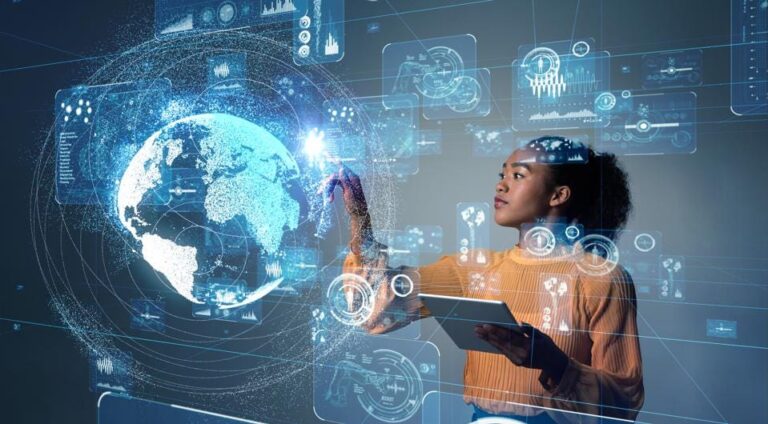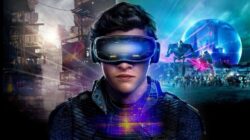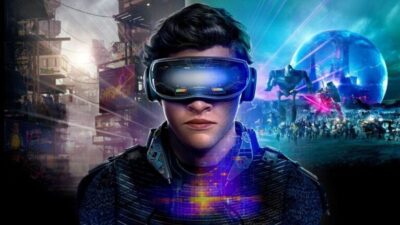Technology is changing. And it’s changing fast. In the past few years, we’ve seen a shift from traditional computing to mobile devices and apps, with virtual reality and wearables becoming more commonplace in our daily lives. But what will be next? Are these new trends worth investing in? We’re here to answer all of your questions about the latest innovations coming out of Silicon Valley:
Virtual Reality
Virtual reality is a technology that allows users to experience and interact with a simulated environment. It’s been around for decades, but it only recently became popular enough to be worth paying attention to.
VR can be used in gaming and entertainment, but also in education and training. The most common example of VR is the Oculus Rift headset, which allows you to feel as if you are actually walking through a virtual world (like a game or movie). Another popular device uses computer screens instead of goggles—you look at your phone screen while wearing special glasses that track your movements so they can create 3D images on screen.
Wearables
Wearables are devices that can be worn on the body, such as smartwatches and fitness trackers. They’re used to monitor health and fitness data, but they also have other uses. Wearables have become more popular in recent years due to the convenience they offer users in terms of convenience and comfort.
Wearables are considered a trend because these types of devices aren’t just fads anymore—they’re here to stay! In fact, some experts predict that wearables will become even more popular over time as companies continue releasing new models at an increased rate each year.
Augmented Reality
Augmented reality is a technology that allows you to see the real world and computer-generated images together in your field of view. It’s an exciting new way to experience, learn about and market products and services.
AR can be used for many things, including training, education and marketing. It allows users to use their phones as an interactive tool that enhances their lives by providing additional information (e.g., directions) while they’re out shopping or enjoying a meal at a restaurant.
AR also has applications beyond entertainment—for example:
- Manufacturing plants can use AR tools like 3D printers that allow employees to create parts right before their eyes on large screens inside the factory; this reduces waste during production because workers don’t need as much paper work anymore since everything can be done digitally instead of manually
Artificial Intelligence (AI)
AI is a branch of computer science that deals with making computers behave in an intelligent way. It’s often referred to as machine learning, but there are many different ways to classify it.
AI is a set of algorithms and techniques used to create intelligent machines. The term “artificial intelligence” was coined by John McCarthy in 1956, but its roots can be traced back much further—to ancient Greece when Aristotle wrote about his concept of “synthetic reason” (or “artificial intelligence”).
Internet of Things (IoT)
The Internet of Things (IoT) is a new way of looking at the world. It’s about connecting everything, from your refrigerator to your car to your phone, with technology that can be controlled by software and monitored remotely. This has opened up a whole new world for businesses and consumers alike: you can use IoT to control things in your home with an app on your phone!
In this article we’ll look at some examples of how this technology is already being used today, as well as what it could mean for the future.
Robotics
Robots are becoming more common in manufacturing and are being used to perform household tasks, such as vacuuming. They’re also being used in healthcare, education, law enforcement and security.
Robots have been around for decades but only recently have they become affordable enough to become commonplace. The cost of building a robot can be as low as $10 million; this is where the hype comes into play because there’s no reason why you can’t buy one today if you want one!
3D Printing
3D printing is a process of making a three-dimensional solid object from a digital file. It has been used in medicine, architecture and the automotive industry.
3D printers can be bought for home use or used in manufacturing plants. The technology was first developed in 1984 by Chuck Hull and David DeLong at the University of Michigan, who applied it to print out small plastic parts to create working models of cars on an assembly line.
Technology trends are changing, so pay attention.
Technology trends are changing, so pay attention. It’s not just a matter of keeping up with the latest technology and gadgets—it’s also important to understand where they’re going. Here are some examples of recent trends:
- Virtual reality (VR) is a great way to learn about the world around you in an immersive way. You can explore different places, meet new characters and see things from their perspective by wearing a headset that connects directly to your brain through sensors placed inside glasses or goggles. Today’s VR experiences allow users to interact with objects as if they were really there—and this type of immersion has led many people down an exciting new path toward learning how things work under different circumstances!
Conclusion
Technology is changing at a rapid pace, so it’s important to keep up with what your competitors are doing. The latest trends are always changing, and they can be hard to predict. These technologies might not be as cool or exciting as they seem in their infancy, but the potential is real! You may already be familiar with some of these trends—like virtual reality (VR). If not, then stay tuned because there are even more in development right now that will make you rethink everything about how we interact online and off.










